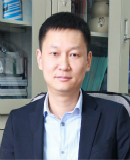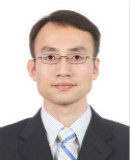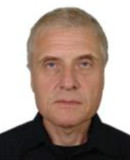Keynote Speakers
We're searching for more keynote speakers! Experts in the area of Energy Material and Energy Technology are welcome to join the conference. In principle, the applicant should be above associate professor, researchers, and engineers.
If you would like to join as EMET keynote speaker, please send your latest CV, recent photo, speech title and abstract to info@emetconf.org.

Dezhi Ning
Professor
Dalian University of Technology, China
Title: Hydrodynamic Investigation on an Offshore Cylindrical Oscillating Water Column Wave Energy Converter
Abstract: Among all the wave energy converters, the oscillating water column (OWC)-type wave energy converter (WEC) is the most attractive and extensive one due to its simple structure and reliable technology. However, most researches on OWC device are focused on the bottom-standing ones constructed on the shoreline. The development of floating WEC devices has been in the urgent stage since the offshore wave energy exploitation attracted the world attention.
In the present study, the hydrodynamic performance of a floating OWC WEC was investigated experimentally and numerically. The physical experiment was carried out at a nonlinear wave flume at Dalian University of Technology. The floating cylindrical OWC device is constrained by the spring and only moves in the heave mode. A second-order time-domain higher-order boundary element method (HOBEM) based on the perturbation expansion technique is applied to simulate the nonlinear wave interaction with the floating OWC device. The nonlinear terms of pneumatic and viscous damping are introduced on the free surface boundary conditions inside the OWC chamber. The comparisons between experimental data and numerical results for the air pressure and surface elevation in the chamber, the hydrodynamic efficiency and the vertical displacement of the OWC device were performed. The effects of the opening ratio, wave steepness, mooring stiffness, chamber number and chamber draft on the hydrodynamic performance were investigated. It was found that the mooring stiffness has a great influence on the hydrodynamics, i.e., the hydrodynamic efficiency and the effective frequency bandwidth increasing with the mooring stiffness. Compare to the fixed OWC device, the hydrodynamic efficiency increases due to the vertical moment in the high frequency domain. The hydrodynamic efficiency of the dual-chamber OWC device increases by comparison with the single-chamber one. A coupled resonant effect between the inner- and outer chambers was observed for the dual-chamber OWC, which leads to the difference between the resonant frequencies and broadens the effective frequency bandwidth. For the proposed floating OWC device, a shorter chamber draft can lead to a wider effective frequency bandwidth, though the resonant efficiency and frequency decrease. The present HOBEM model can enable the structural design of the floating OWC device.

Hui Xu
Professor
Key Laboratory of Functional Inorganic Material Chemistry, Ministry of Education & Heilongjiang University, China
Title: White Thermally Activated Delayed Fluorescence Systems for Lighting
Abstract:Thermally activated delayed fluorescence (TADF) materials for white organic light-emitting diodes (WOLED) emerge very recently, which are based on cheap and renewable pure-organic molecules with the feature of upconverting nonradiative triplet exciton to radiative singlet exciton through reverse intersystem crossing (RISC) for 100% exciton utilization. Therefore, TADF WOLEDs exhibit the great potential for daily lighting applications. However, the high polarities, serious collisional quenching and significant dependency on device structures of TADF emitters make it a real challenge to achieve high-quality white emission with a relative simple device structure, e.g. single emissive layer (EML). Actually, most reported full-TADF WOLEDs adopted multiple EML structures to take use of spatial effects for optimizing exciton allocation. Based on our previous works about blue TADF diodes and dual-EML TADF WOLEDs, we realize that the optimization of the energy and charge transfer between blue and yellow TADF emitters is one of the key issues for achieving high-performance TADF WOLEDs. Therefore, we used blue TADF molecules with steric configurations and suitable energy levels to optimize the energy transfer from them to yellow TADF emitters in their single-layer white-emitting systems through adjusting energy gaps and intermolecular interactions, supporting the single-EML TADF WOLEDs with the impressive maximum ηEQE beyond 20%, accompanied by the remarkably reduced roll-offs, which are comparable to their phosphorescence counterparts.

Gangtao Liang
Associate Professor
Dalian University of Technology, China
Title: Microscale Heat Dissipation Surface for High-Heat-Flux Cooling
Abstract: Aggressive developments of high-heat-flux devices (e.g., advanced computer chips, spacecraft electronics, hybrid vehicle power electronics and fuel cells) and ultra-high-heat-flux devices (e.g., particle accelerators, rocket nozzles, fusion reactors, radar systems, and laser weapons) have incapacitated the conventional fan-cooled and various single-phase cooling techniques. Instead, two-phase cooling, i.e., boiling, which utilizes liquid/vapor phase-change latent heat in combination with temperature-rise sensible heat, shows its great advantages in tackling these above-mentioned cooling concerns. This keynote lecture will report pool boiling heat transfer enhancement on the micro-pit surfaces. Microscale pits fabricated on plain surface are able to reduce boiling incipience superheat, and improve both nucleate boiling heat transfer coefficient and critical heat flux (CHF). Boiling enhancement magnitudes have a weak dependence on the micro-pit diameter, but increase monotonously with decreasing the pit depth. There exists an optimum pit-to-pit spacing for the maximum boiling enhancements, which is virtually identical to bubble departure diameter, and estimated using the capillary length. The major mechanism behind is that this spacing is favorable for alleviating hydrodynamic instabilities induced by the counterflow between liquid inflow and vapor outflow. The highest heat transfer coefficient and CHF using water as fluid under the present conditions are 70.0 kW/m2K and 165.7 W/cm2, improved by 58.8% and 33.7% compared to the plain surface, respectively.

Alexander Lukin
Principal Research Scientist & Executive Director
Western-Caucasus Research Center, Russian Federation
Title: New Insights in Control of Properties of the Hybridized Carbyne-Based Nanofilms Through Manipulating by Self-Organized Patterns Excitation at the Ion-Assisted Plasma-Driven Synthesis
Abstract:Among all allotropic forms that the carbon element presents in nature, sp-hybridization is one of the most intriguing and elusive. Carbyne is the one-dimensional allotrope of carbon composed of sp-hybridized carbon atoms. In presentation we report the laboratory ion-assisted plasma-driven synthesis and plasma functionalization toolkit of hybridized carbyne-based nanofilms with embedded atoms of various chemical elements. By insertion of the atoms of various chemical elements into the spatial structure of carbyne nanofilm, the hybridized nanostructures with unique electrophysical, optical, structural, topographic, biological and chemical characteristics can be synthesized. Carbyne is just one atom thick, having an extremely large surface area in relation to mass. This property is important in energy storage matrices like batteries and supercapacitors, where the surface area of the electrode determines energy density. Decorating a carbyne chain with calcium atoms, which suck up hydrogen molecules, creates a high-density, reversible hydrogen storage device. We will consider mechanisms of nano-structures self-organization and possibilities for manipulating by self-organized patterns excitation at the ion-assisted pulsed plasma synthesis of the hybridized carbine nanofilms and further their functionalization (plasma activation). Such a new nano-engineering strategy opens potential for improved advanced energy storage. Carbyne-based nanofilms are critical for sensing applications, as they have physical and electronic properties which facilitate the detection of substances in solutions, gaseous compounds and pollutants through their conductive properties and resonance-frequency transmission capacities. Carbyne may be stable at high temperatures (3000 K). Hybridized carbyne-based functional nanomaterials combined with nano-sensors could improve the performance of the plasma-based space propulsion systems for CubeSats and Small Satellites.